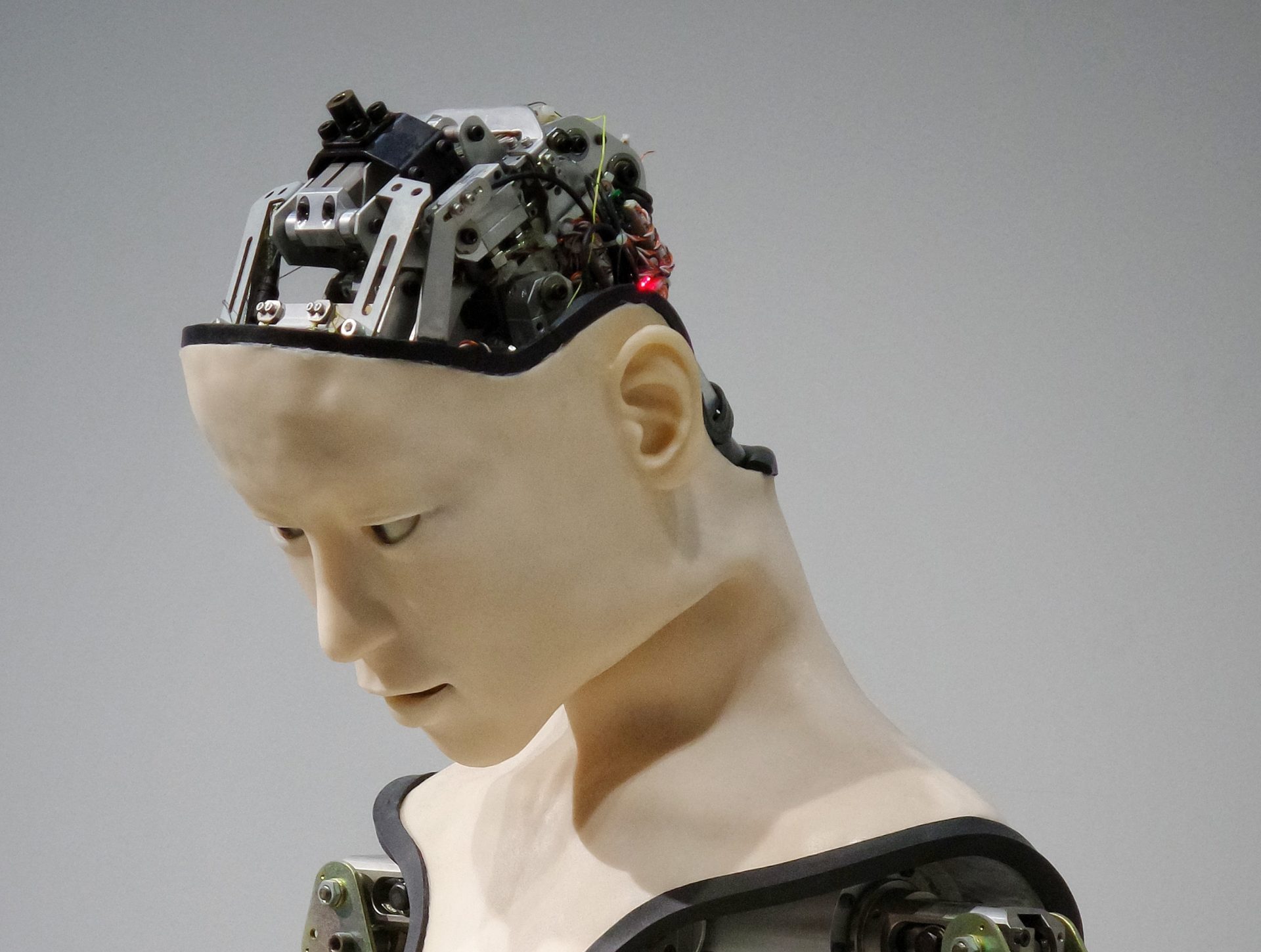More and more countries are adopting national strategies for the development of creative industries. Russia is no exception. The UN believes that without these industries it is impossible to solve such global problems as poverty and hunger, inequality, climate change, and the transition to responsible consumption and production. At the same time, it is not easy to measure the creative economy due to the fact that there is no single definition and understanding of what is considered a creative product.

What is creativity
Before the end of the year, the State Duma plans to consider a draft law on the regulation of creative industries, Denis Kravchenko, First Deputy Chairman of the State Duma Committee on Economic Policy, stated at the Russian Creative Week, which took place in early July. “The document will consolidate the institutional foundations of the creative industry: it will single out this sector of the economy, give it a structure and conceptual apparatus, and provide a legal opportunity to form support mechanisms at the federal and regional levels,” Kravchenko said.
The adoption of the law, according to Denis Kravchenko, will allow creative industries to move to a qualitatively new level of development, create new jobs and contribute to the growth of the country’s GDP. Marina Abramova, President of the Creative Economy ANO, added that the bill would strengthen the protection of intellectual property authors and increase the flow of investment in the creative sector.
In 2021, the government approved the Concept for the Development of Creative Industries until 2030. The document assumes that systemic state support will increase the share of the creative sector in the economy from 2.2% to 6% by 2030, and the share of citizens employed in creative professions from 4.6% to 15%. The head of Russian Cabinet of Ministers, Mikhail Mishustin, then noted Russia has all opportunities for effective promotion in the field of creative industries, and the task of the government is to create conditions that “will help people use such resources to increase the share of creative entrepreneurship in all sectors of the economy.”
However, in order to create conditions, it is necessary to determine what exactly belongs to the creative industries. The UNCTAD (United Nations Conference on Trade and Development) report Creative Economy Outlook 2022 highlights that the lack of agreed definitions and methodologies, as well as the lack of data, are among the key challenges in measuring the creative economy. Quantifying creative services is hampered by the lack of statistical systems, adequate institutional arrangements, financial resources, IT infrastructure and trained experts. This is especially true for developing countries.
Scientific approach
Russian economists also pay attention to the problem of measurements. More than 10 years ago, Institute for New Industrial Development (INIR) S.Yu.Witte proposed the theory of a new industrial society of the second generation NIO.2 which take as one of the main features the increasing role of creative labor, recalled at the seminar “Genesis of Noonomics: Knowledge. mental objects. Creativity” Sergey Bodrunov, President of the Free Economic Society of Russia, President of the International Union of Economists, Corresponding Member of the Russian Academy of Sciences.
According to him, in modern economic literature, creativity as a phenomenon of a market economy is viewed mainly through the prism of creative business, creative industries, which are statistically related to those in international statistics. “The problem is how to measure. You can count the areas of show business, fashion, games, design, software production, and so on. But this is not enough. The most massive areas in which labor can be and partly creative are not only art in the market segment, but also science, education and production to the extent that it becomes knowledge-intensive as part of the transition to R&D.2,” noted Sergei Bodrunov.
In the concept adopted by the Russian government, creative areas are understood as those areas in which a significant share of the added value is formed through creative activity and the management of intellectual property rights. These are, in particular, cinematography, architecture, fine and theatrical art, fashion, design, and advertising. A similar definition is used in UNCTAD: the organization considers creative industries as cycles of creation, production and distribution of goods and services that use creativity and intellectual capital as the main resources.
The totality of these goods and services in a creative economy is usually called mental objects. “What is a mental object? I define it as follows: it is something whose content remains constant regardless of the material form. It can be a computer application, text, music, video,” explained Alan Freeman, professor at the University of Manitoba (Canada), at the INIR seminar. Recently, in the creative economy, an increasing share is occupied by mental objects related to IT. “It is on the basis of software that other areas are developing, for example, such as mobile phones, etc. That is, everything related to computer technology is actually based on software,” said Professor Freeman.
Not only artists
The contribution of the creative economy to Russia’s GDP was approximately 2.7% in 2020 (according to estimates from the HSE Institute for Statistical Research and Economics of Knowledge). For comparison, in the US this figure is 4.2%, in Germany — 3.1%, in the UK — 5.5%.
In July of this year, the government expanded the list of professions and positions of creative workers. Now it contains 236 positions. However, it is not so easy to calculate creative employment, economists point out, since it consists of two components. The first is those who work in creative fields, but not all of them are engaged in creative work (for example, drivers at a film studio). There are 2.7 million such people in Russia (data from Higher School of Economics (HSE) for 2021). The second is those who are engaged in creative work, but not necessarily in the creative industry (for example, designers in auto concerns). This is another 3.5 million people.
The most common creative professions in Russia today are an advertising and marketing specialist and a software developer. According to the HSE as of January 2023, the former account for almost a quarter of all creative employment, and the latter account for 19%. The number of the creative class (by which researchers mean all those employed in professions related to creative and intellectual activity) in Russia today is 3.4 million people, or 4.8% of the total number of employed. In five years, this figure has grown by almost a third.
It is the creative class, according to scientists, that becomes the main driving force of the economy in the new industrial society. “Non-replaceable labor is labor that cannot be replaced by machines, machine tools, robots. I contend that this kind of labor is now increasing in relation to the total volume of labor. This is, in fact, a new stage of capitalism. Creative labor resources become the main ones, and we should use the machines only as an auxiliary mechanism, ”says Alan Freeman.
This trend is becoming apparent to the whole world. The creative industries are now responsible for solving many problems. Thus, the UN has declared 2021 as the International Year of the Creative Economy for Sustainable Development. “More than ever, we need creative thinking and innovation to end the inequalities and vulnerabilities we face today. The creative industries, as the backbone of the creative economy, can help us do this,” said Marisa Henderson, Head of the Creative Economy Unit at UNCTAD. The UN 2030 Agenda for Sustainable Development consists of 17 goals, including the eradication of poverty and hunger, ensuring equal access to clean water, affordable energy, decent work, etc. According to Henderson, without creative industries, all these goals are unlikely to be achieved .
According to Creative Economy Outlook 2022, global exports of creative goods have increased from $419 million in 2010 to $524 million in 2020. Developing countries export more creative goods than developed countries. As of 2020, China was the leader with $169 billion in exports.
Exports of creative services over the same period rose from $487 billion to almost $1.1 trillion. Here, on the contrary, developed countries export much more than developing countries, they account for 82.3% of all exports of creative services. The United States ranks first ($206 billion in 2020).
At the same time, economists have different approaches to what is considered a creative product and what is not. At the INIR seminar, Professor Radika Desai of the University of Manitoba (Canada) noted that reproduction and replication cannot be considered a creative approach. “If you produce millions of CDs, for example, is that a creative process?” she asked her colleague at the university, Professor Alan Freeman. He believes that reproduction becomes a creative process when the reproducer has the right to interpret. “Why should we pay more for an object that was created by hand than for something that was created on a machine? Because we see and feel the hand of an artisan, that is, there is some kind of direct connection with the creator,” professor explained.
Create your own
More and more countries, including developing ones, are developing national strategies for the development of creative industries. And some states (in particular, Latvia, Portugal, Oman, Turkey, etc.) have included creative industries in their long-term national development or sustainable development strategies.
For Russia, in the current geopolitical conditions, one of the main tasks is to build up creative sovereignty. As Sergei Novikov, head of the Russian Presidential Department for Public Projects, noted at the Russian Creative Week, if we do not create and support our own media, films, animation, books, software, then “everyone will do this for us, but according to their own rules and with the ability to turn off any time». Sanction pressure and cleansing of the domestic market are huge opportunities, Novikov stressed, so the state creates conditions for the development of creative industries, and the task of creative business is to occupy these niches and create new ones. “The efficiency of the creative industry is the ability to be economically successful. But not only economic indicators, but also the social effect is what is really important today,” he said.
One manifestation of this effect is the creation of opportunities for young people. In particular, within the framework of the federal project “Invented in Russia”, schools of creative industries are being created. These are modern innovative platforms where children receive professional knowledge and create products that are socially significant for the region. Teenagers simultaneously get acquainted with the basics of world art culture and the use of VR technologies, learn to develop design. “During the year, we launched 35 creative industries schools, which currently have 4,000 students. Another 32 schools will open before the end of the year in 27 regions of the country,” said Nadezhda Reverend, Secretary of State, Deputy Minister of Culture of the Russian Federation, at the Creative Business Forum at SPIEF 2023.
Creative industries are also being integrated into the system of secondary vocational education. Last year, a law was passed allowing colleges to open their own businesses. The Ministry of Education, within the framework of the federal project «Professionality», plans to create a fair of creative student ideas, which will then be introduced into production.
The government pays more and more attention to the education of creatively developed, active and ambitious, educated youth. After all, it is on the cultivation of the creative class that both creative sovereignty and, in general, the development of a new industrial society will depend.
Some Questions of Creative Economy
Alan Freeman
Director of the Geopolitical Economy Research Group at the University of Manitoba, Member of the International Committee of the VEO of Russia, Member of the International Union of Economists, Former Advisor on the Development of Creative Economy to the Mayor of Greater London
First, what is knowledge-intensive production, a service industry or a service sector? Now 84% of the workforce is in the service sector, and in general we are seeing that more and more jobs are appearing in it. Here a problem with terminology arises, because we mainly use terms of material production, but now capitalism, in fact, no longer produces material objects, but intangible ones, so we should ask ourselves what they produce.
Second, is the concept of a knowledge economy well defined? If not, can we use some alternative? Is it possible to somehow quantify noonomics using a theoretical framework to do so? How can we ensure reliable comparative statistics? When there are numbers, you can study trends, it is possible to assess what happened in the country over time. These are the questions I will try to answer.
So what is production? A very simple question. But, I will ask it differently: what, for example, do companies that produce software (SW) do? The statistics that I have, which I think are accurate, show that the largest sub-sector in the service sector is the production of software. And, in fact, it is on the basis of software that other areas are developing, for example, such as mobile phones, etc. That is, everything related to computer technology is actually based on software. In 2022, two of the top three companies in the world — Apple and Microsoft — were not even in the top five 10 years ago. So what’s the deal? What is the meaning of the products they use? And how do we define the results of their activities as knowledge?
Sergei Bodrunov,
President of the VEO of Russia, President of the International Union of Economists, Director of the INIR named after S.Yu. Witte, Corresponding Member of the Russian Academy of Sciences
We are approaching the need to look at the problem of creativity more broadly. Indeed, if creativity is non-mechanized labor, then, apparently, it must have certain attributes that qualitatively distinguish it from mechanized labor. What exactly? Without anticipating the analysis of the concept of “mental objects”, to which we will turn a little later, I note that in the works of philosophers, sociologists, and economists of the second half of the 20th century, published both in our country and abroad, there is such an important, for our analysis especially, a feature of creative work, as self-motivation. The motivation for work in the space of creativity is the work itself, where it as such becomes a need. Moreover, I would add: in a non-economic society, where a self-acting production system will become the material basis for satisfying needs, and where labor as an economic phenomenon and element of production is transformed into activity, and creative labor into creative activity, self-motivation will become the only motivation for such activity. This characterization, I would say, overturns the chessboard of history and throws off all the usual axiomatics of modern economic science, at least of its neoclassical version. Let me remind you that, with rare exceptions, we specifically stipulate, for example, within the framework of behavioral economics, labor in general is a burden, and money is the value. In the case we are considering of gradual advancement to smart production, to creative activity as the dominant one, everything changes: labor is becoming more and more creative and gradually losing economic meaning, turning into non-labor creative activity, it becomes more and more a non-economic need to create, and the utilitarian good becomes a means of human development, as creative person, cultural person. This is how the transition to a new post-economic way of satisfying needs is carried out, and it is from this that a new post-economic reality is born.
This is how we move into the space of the genesis of noonomics, a qualitatively new world in which the post-economic way of human being is replacing the economic one.
Andrey Kolganov,
Head of the Laboratory for Comparative Research of Socio-Economic Systems, Faculty of Economics, Moscow State University named after M.V. Lomonosov, Member of the Presidium of the VEO of Russia, Member of the Presidium of the International Union of Economists, Doctor of Economics, Professor
How does creativity affect the change in economic relations, and then the problem of the evolution of economic social relations into non-economic ones?
We see that with the development of creativity, we have a change, an evolution of property relations, the market, planning, and ultimately our assessment of the role played by financial capital in the economy, etc. is changing.
Creativity changes the social class structure of society. It is no longer the same as it was in the 19th century, and not even the same as it was in the middle of the 20th century. This structure is changing, precisely under the influence of changes in the role of creative labor. The nature of man is changing. New knowledge, new technologies, new opportunities create a fork, a person can use them in different ways: he can use them to develop his potential, or maybe for all sorts of uncontrolled, unconscious and irrational processes that can undermine the very foundations of human existence. And we are also seeing these trends.
Well, finally, we can say that there is a problem of the collision of creative processes, the creative evolution of human activity with the existing shell of economic relations, which give them a very distorted form. For example, the concept of human capital is, in my opinion, an inadequate reflection of the growing role of human creative activity, because it reduces this process only to money making.
Gennady Lobastov,
Professor of the Department of Philosophy of the Moscow Aviation Institute, Doctor of Philosophy
We talk about smart manufacturing but what production are we talking about? If we are not talking about economic production, but about the production of man himself, the production of the human mind, the production of human knowledge, then how can this task be combined with bourgeois social relations, with capitalism, where goods are actually produced in all forms, from any material production to mental production? That is, the person himself in his individual abilities, in all the variety of abilities, and each ability is formed, created, held by the social conscious or unconscious, it does not matter whether it is in school or outside of school, it is created as a commodity. This is the world that Marx referred to as the world of universal prostitution.
Therefore, to find the grounds for how to live and what to do with the mind, and how to enrich our reality in all its productive and creative forms cannot be solved without resolving those fundamental problems that give rise to the essence of a human. Moreover, we are turning science into near-science — without trying to find the truth, we are trying to sell something, to steal from somewhere. Theft is a normal way of bourgeois existence. This ability is formed in school. The development, formation, retention of this ability is still preserved.
By Eugenia Noskova



